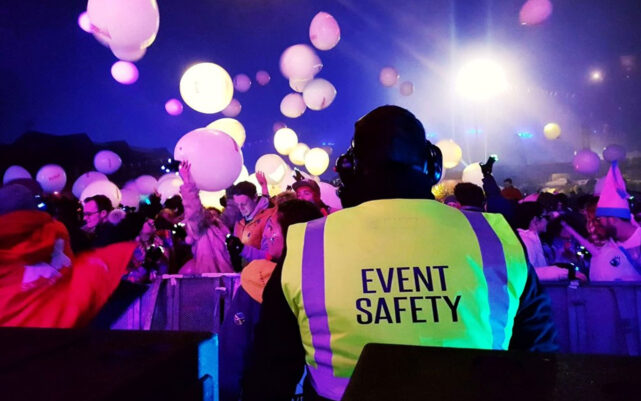Thinking about what could go wrong at your event might seem like a negative mindset, but in reality, it’s one of the most important things you must do in the planning stages of an event.
As much as we wish for everything to go smoothly, things never happen exactly as you imagined and accidents do happen. It pays to know what the risks are, make plans, and be prepared to deal with them on the day.
Having the right insurance cover for your event is a bit of a no-brainer. It’s a specialized area though, so getting advice from a knowledgeable broker or risk consultant may end up saving you money and time in the long run. Even with the right insurance, however, you still have to do your part in reducing and managing your event risk.
Each event has its nuances and depending on the location, the type, and the size, you’re going to have several different risks to take into account. However, there are a few areas that every event planner needs to take a good look at as a starting point.
So think about the next event you’re planning, take 15 minutes to read through what you should be considering, and make time for a safety planning session with your team. Once you get started, it is a good bet that another whole train of hazards will be identified by your crew, and ways to manage them.
A good tip – once you have identified as many as you can, think about the impact they could have if something went wrong and the likelihood of that happening. That will help you to prioritize your time and resources, and provide a good starting point for your crew to start delivering on the risk management side of your event.
1. Day-Of Security

We cannot stress enough the importance of security at events. Security keeps you covered in case of :
- An injury to a guest
- Damage to property
- Crowd control
- Troublesome guests
- Unexpected situations
That’s why you must plan your security strategy during the planning process. The types of event security you need will depend on the size, scope, location, and type of event you’re planning.
2. Know The Venue Inside And Out
You should also know how porous the venue is. Porous refers to any way someone could get inside without using actual entry points. This could be a back door for staff, or a window that can be opened from the outside.
Identify all venue entry points and make sure all personnel are aware of them. Creating a diagram you can share is an easy and effective way to give the team a visual understanding.
If the venue is outdoors, establish boundaries where the event perimeter begins and ends. Temporary fencing and barricades can help.
3. Gauge Attendee Risk

Are there any attendees or guests that may pose a risk? You can’t do a background check for every ticket buyer, of course. But, you should identify potential risks. For example, if a guest speaker represents a company with a controversial history, that may increase the risk of protests or attendees who want to cause a scene.
Be suspicious of guests that purchase event tickets in bulk. This may be an event protestor buying tickets for their fellow disruptors.
4. Control The Crowd
The larger the crowd, the more likely it is that something can go wrong. Staff needs to be comfortable with managing large groups and exerting authority when needed.
The security team may need to perform the following for crowd management:
- Ask guests to move away if they’re blocking the exit.
- Monitor the registration line to keep it organized and prevent people from cutting. (Using cones, yellow tape, or stanchions is a great help here.)
- Ensure guests don’t stray into staff-only areas or areas reserved for VIPs.
It’s also important that you ensure that the crowd in the venue never grows beyond the capacity limit. Remember to count all staff and security personnel when keeping track of total numbers. Going over capacity can result in fines from the venue administrator.
5. Assess The Potential For Large-Scale Attacks

Unfortunately, we have to mention this at all, but this is the reality. Big crowds are an easy and soft target, so armed security personnel are recommended for larger events. All guests should also have their bags checked. A professional security team is trained to look for weapons or items that can be improvised as weapons.
Publicize ahead of your event that all personal bags will be inspected to ensure guest safety. You should also include a list of contraband items that will not be allowed in the venue. This includes all weapons and certain chemical materials.
Aside from bag checks and body scanners, personnel should also be on the lookout for suspicious behavior. Examples of abnormal behavior that should alert staff include:
- Constantly staring at the staff
- Lack of engagement or feigned interest in event activities
- Surveilling the venue layout
Monitoring for suspicious activity should also take place near the venue exterior. Since bags won’t be checked until entry, perpetrators may find opportunities right outside the venue where attendees gather to register.
6. Keep Communication Tight
Your staff needs to stay in constant communication. Be sure each staff member has a walkie-talkie.
If you hire a professional security detail, be sure they communicate back and forth with your staff. Company staff and third-party security details tend to not communicate. The former should report all suspicious activity to the security team and refrain from confrontations.
Pro tip: Diagramming the event beforehand can be a great way to share a visual map of the security setup with your staff.
Event Security Matters
Events generate a lot of ROI for planners, companies, and venues. However, with any live public gathering, there is always the risk of something going seriously wrong.
You and your team have to be prepared to respond at a moment’s notice. An organized and safe event ensures everyone leaves happy.




